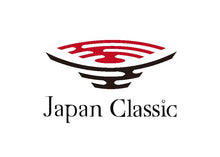【Japanese Pottery】Kakugama (Square Kiln): Japan’s Coal‑Fueled Falling‑Flame Kiln
About the Author
Hayato Eihara
I am a Japanese resident living in Japan!
With years of experience, I share in-depth and detailed information about Japan with the world.
As part of my mission to promote Japanese culture, I also run Japan Classic, an online shop specializing in unique, high-quality tableware. If you're interested, feel free to check it out!
Table of Contents
1. Kaku Kiln (角窯, Coal Kiln) Meiji Era–Present: Inverted Flame Type
The kaku kiln (角窯, rectangular kiln) originated in the early Meiji period based on a coal‑fired kiln developed by German chemist Wagner (ワグネル) and was adapted throughout Japan.
During the Edo period, multi‑chamber noborigama (連房式登窯, multi‑chamber climbing kilns) were common, but firewood (薪) was expensive and required cutting, splitting, drying, and storage for months. Coal (石炭) is highly combustible in small quantities and requires minimal processing from extraction to fuel, leading to widespread adoption of coal kilns (石炭窯) in the Meiji era.
Although modern fuels have transitioned to heavy oil, light oil, and gases (butane, propane, city gas), the kiln retains the name “coal kiln” (石炭窯) from its origins.
・The kiln’s exterior is rectangular with a domed ceiling to improve flame circulation.
・No slope is required, resulting in a compact, nearly square footprint.
・Multiple fireboxes (焚口) concentrate flames toward the center, minimizing temperature variation within the chamber.
In the example diagram, two fireboxes produce flames that collide at the ceiling and descend toward the ware (倒炎, inverted flame). The heat then travels through flues beneath the floor toward the chimney. Balancing fire intensity from each firebox maintains uniform chamber temperature.
・Originally coal‑fired, some kaku kilns use wood on a grate (ロストル), while modern kilns employ burners for oil or gas.
・Compared to traditional climbing kilns, coal kilns offer lower fuel costs, compact footprint, and consistent temperature.
If only one firebox is used, temperature variation reappears—with hotter zones near the firebox and cooler zones deeper in the chamber—negating uniformity advantages. Potters may exploit these gradients by placing high‑refractoriness ware closer to the firebox and lower‑refractoriness ware toward the back. Test pieces (テストピース) can also be placed throughout the chamber for temperature mapping.
Modern gas‑fired kaku kilns feature precise temperature control with multiple small burners distributed throughout the chamber, providing uniform heat and easy control over oxidation and reduction firing. Contemporary gas kilns are essentially compact kaku kilns, offering excellent consistency for production environments.
Brighten Up Your Table.
We deliver vibrant, high-quality pieces directly from Japan to add color and elegance to your dining experience.







Leave a comment